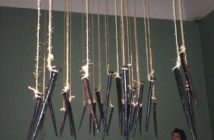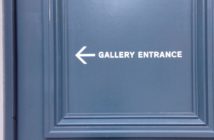Peter and the Wolf is a great musical story for children. But like Grimms Fairytales there’s a scary side that can lead to bad dreams. Its composer Sergei Prokoviev initially explored dissonance to disturb his audience, and when his Second Symphony was calmly received he worried he was no longer a sensation. Yet when the July Baycourt concert by the New Zealand Symphony Orchestra included Prokofiev’s Sinfonia Concertante for cello and orchestra, it was the performers who were the sensation.
Cellist Alisa Weilerstein was spectacular in her reading of this difficult work. Difficulty was expected since Prokofiev received input from virtuoso compatriot Mstislav Rostropovich, but Miss Weilerstein’s performance was spellbinding. High-speed passages had faultless intonation, and long expressive lines a touch of romanticism. Conductor Rafael Payare (Venezuela, in his first appearance with NZSO and incidentally her husband) led Prokofiev’s colourful orchestration in masterful support of an exhausting solo part. Her one slip of intonation at the top of her final flourish was easy to forgive.
Bad dreams and hallucinations were the lot of composer Robert Schumann. Equally active in literature and music, his interest in Lord Byron had led him to that poet’s Manfred with its elements of the supernatural. Fascination with Byron himself, his sexual misdeeds and incest, were in strange contrast to Schumann’s own life and marriage to Clara (for whom he wrote his wonderful Piano concerto). Yet his Manfred overture with its thick woodwind scoring enabled NZSO to show off its secure intonation in the woodwind section.
Tchaikovsky’s sombre Symphony No. 6 may be a warhorse, but it is a magnificent piece. The 5/4 second movement is remarkably fluid, an endless delight. The third movement, energetic and full of surprises, would tax any conductor. Yet this is where Maestro Payare shone, giving clear cues to his players in a tour de force that the Tauranga audience recognized with an unscheduled round of applause. Only in the 4th movement did the sombre mood return, an enigma that preceded Tchaikovsky’s sudden death by just days.
This was a stunning concert, and might have been more so had our stage enabled the full orchestra of the Mahler 1st that Auckland and Wellington heard on this tour. A proscenium arch stage that muffles the high brass is no place for these concerts, and we can only hope Tauranga will one day build a more suitable venue.
When Mozart got it Right
When Mozart decided to update Handel’s Messiah by rescoring the instrument parts, he chose the newly invented clarinet as part of his orchestra. It was not a happy marriage. Replacing the brilliant trumpet line in the Hallelujah chorus with a clarinet just didn’t do it. Yet in his last two years Mozart found a voice in the clarinet – in his clarinet quintet, and the popular clarinet concerto. Of these, the quintet is by far the better composition.
We heard this piece at a Tauranga Park concert by the visiting Dalecarlia Clarinet Quintet, the fourth in the Tauranga Musica series. Though the young performers reside in Sweden, two are from New Zealand: Anna McGregor clarinet from Christchurch, and Manu Berkeljon violin from West Coast.
Marriage of a clarinet and string quartet proved a stimulant for Mozart. Unlike the oboe or flute whose lower note of Middle C constrains their roles in similar quintets, the clarinet chalumeau extends below the violin, to just one note short of the viola. For Mozart (who played viola himself) this must have seemed like writing for a group with two violas, and his joy is evident in the constant exchanges and contrapuntal equality.
This joy reflected in the players. Phrases tossed between instruments were exchanged with knowing smiles and body language that delighted the audience. Phrase transitions in the first movement showed how tightly synchronized this ensemble could be. Yet in the slow movement when the clarinet had a pickup that offered Miss McGregor control, she knew how to delay her entrance just enough to keep the other players in full subservience.
This was chamber music at its best and the audience knew it. They responded with extended appreciative applause.
Mozart was preceded by two contrasting works, one very tonal by Swedish composer Emily Lindstrom, and a contemporary piece by New Zealand’s Anthony Ritchie in which the clarinettist at times employed circular breathing.
Tauranga Park Auditorium was ideal for this wonderful concert and large audience. It is also the venue for the next of Tauranga Musica series on Sunday August 17.
Professor Barry Vercoe Mus D





